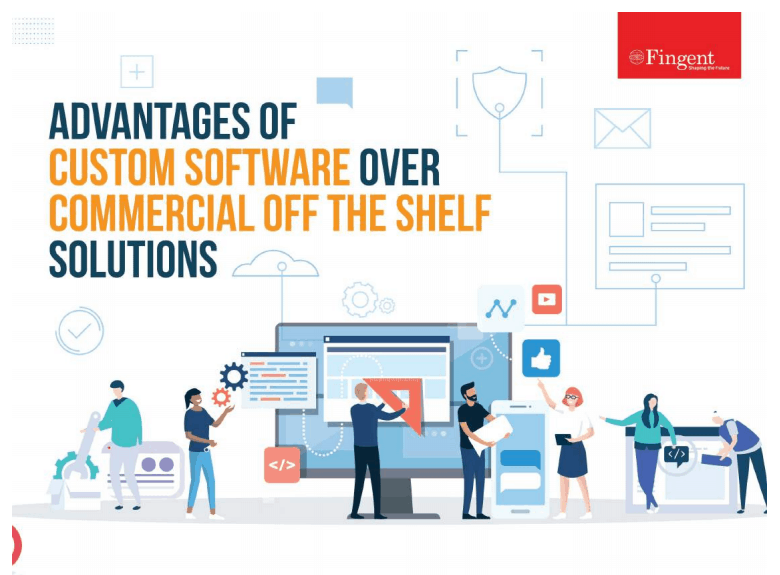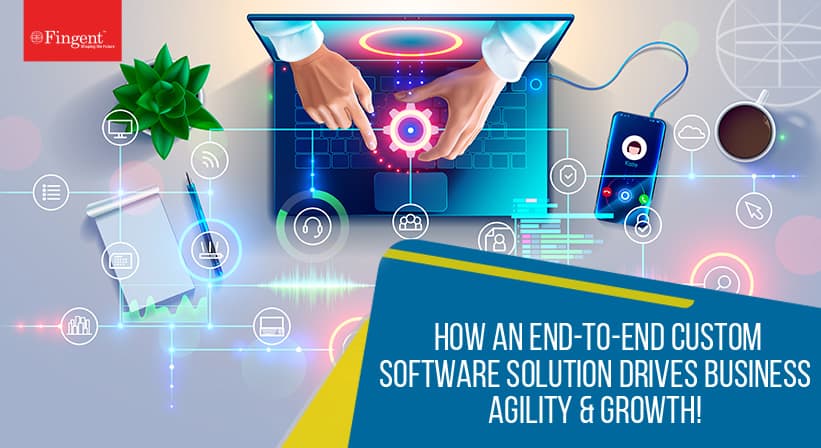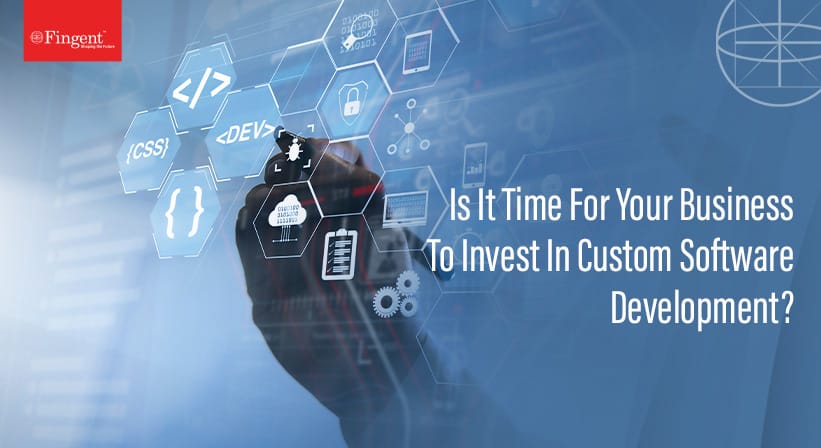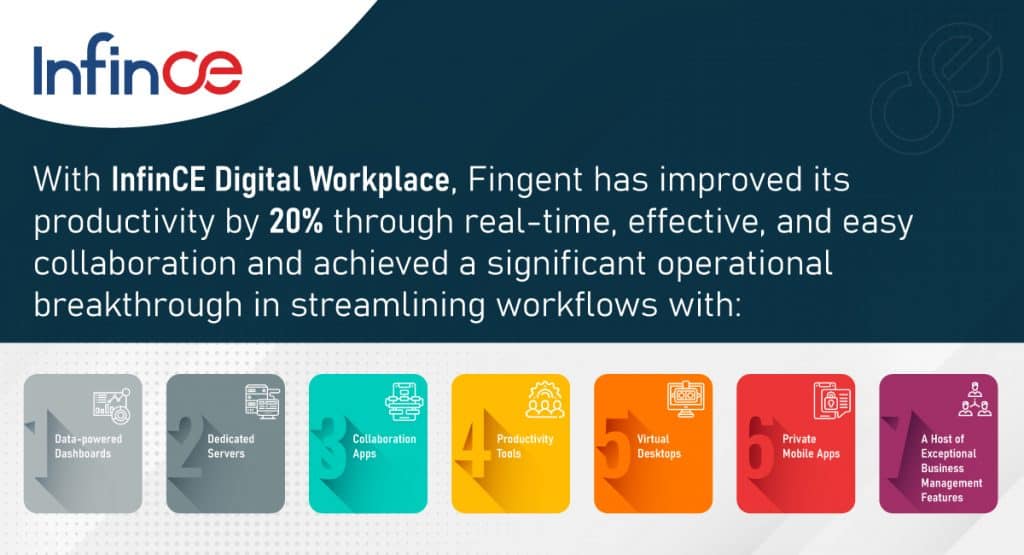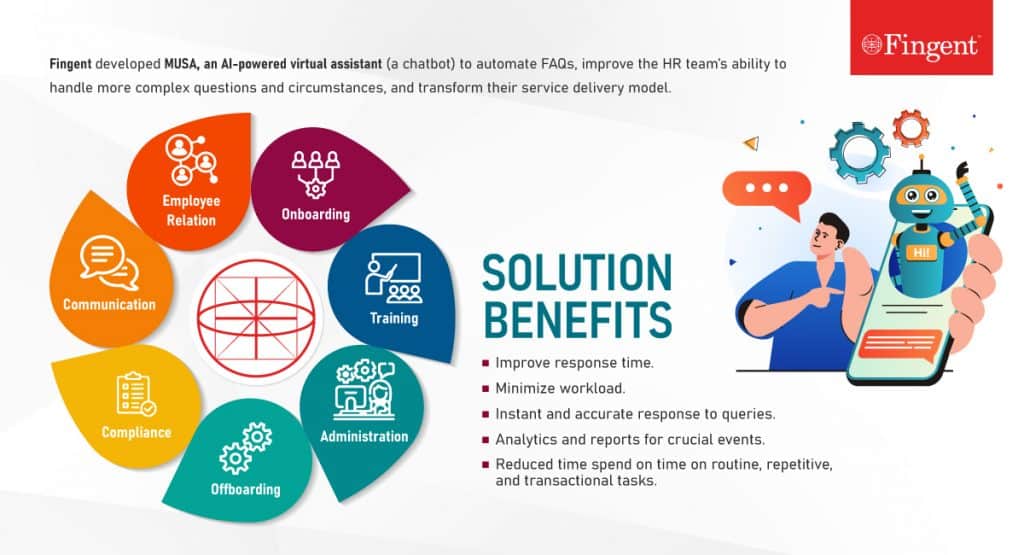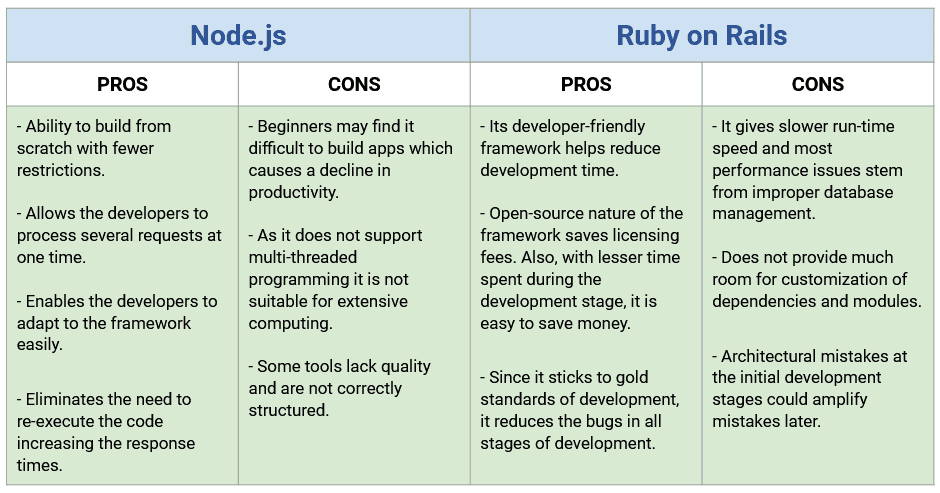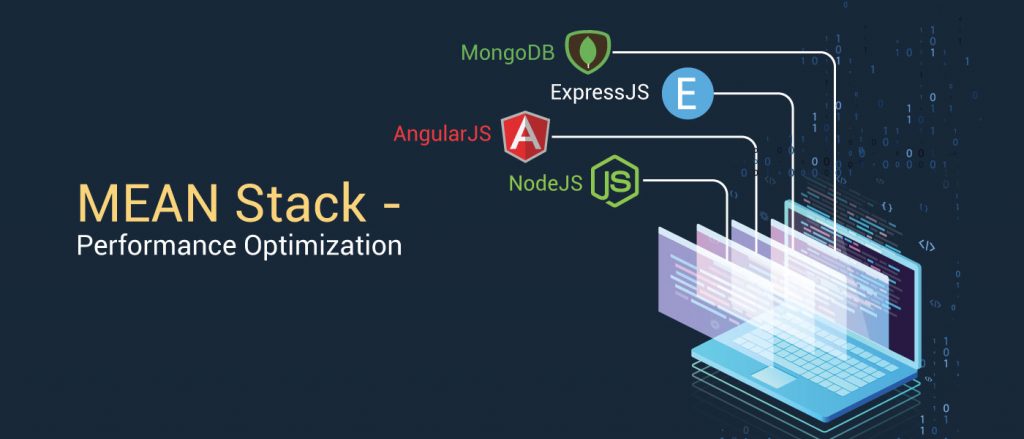Category: Digital Transformation
According to a 2020 report, 58% of real estate brokers have a clearly defined digital strategy, a figure that represents a 6% increase from the two previous years and thus indicates that an increasingly large percentage of the real estate industry is buying into the concept of digital transformation.
While the real estate industry is — and always will be — centered around interpersonal interactions between buyers, sellers, and agents, technology plays a more significant role in these transactions than ever before. Innovative real estate firms worldwide are leveraging futuristic technology far more frequently, and those that fail to adapt will find it hard to keep up.
Technology such as machine learning (ML) software, artificial intelligence (AI)-powered mobile apps, drones, and augmented reality (AR) solutions are no longer just “nice to have” in the real estate industry. Digital transformation is an inevitability that real estate professionals must embrace if they want to thrive in such a rapidly evolving business space.
Why Digital Transformation Is Inevitable for the Real Estate Industry
While many factors fuel digital transformation in the real estate industry, the most potent catalyst is consumers. Home buyers and sellers have grown accustomed to being able to perform a variety of essential life tasks online thanks to the ever-evolving nature of smartphones and other sophisticated internet-connected devices.
According to a 2022 report, 51% of all home buyers found the properties they purchased via the internet. Another 29% found their dream home with the assistance of a real estate agent, whereas just 4% located the home they eventually purchased via traditional signage.
These statistics indicate that the vast majority of prospective buyers are taking charge in their search for their next home. Real estate agents who want to keep pace must incorporate futuristic technology into their sales models or risk finding it increasingly difficult to provide consumers with the efficient and primarily digital experience they prefer.
Still, the industry is about more than buying and selling homes and real estate technology means more than improving sales. Many property management firms want to leverage technology for payment platforms, leasing and facility management, back office processes, and more. Most important to these management teams is having all those processes in one place.
Read more: Reshaping Real Estate Operations with Fully Integrated End-to-End Software.
Futuristic Technology is Poised to Reshape Real Estate
The real estate industry can solve many existing challenges by embracing digital technologies. From complex workflows brought on by the multitude of activities required of a real estate firm to communication shortfalls, there are many leading technologies that property services can embrace as part of a digital transformation. While there is no single answer, some forms of futuristic technology that are already making a big splash in the real estate industry include:
1. ML and AI
Machine learning and artificial intelligence technologies are true game changers for the real estate industry. They enable real estate agents and brokers to automate redundant tasks, like creating timesheets, filling out paperwork, generating offer documents, or scheduling meetings. Within property management, automation can lead to higher sales volumes, efficient back-office solutions, and a more valuable experience for clients and management teams.
2. Mobile Applications
Real estate agents and property managers are always on the go, and while smartphones help them stay connected to clients and co-workers while in the field, these devices are only as good as the applications installed on them.
With that in mind, many real estate firms are turning to robust mobile applications that are purpose-built for the real estate industry. These applications can enable the performance of a wide array of tasks remotely, including approving documents, sending forms to clients, and much more.
3. All-in-One Property Management Platforms
Traditionally, real estate firms that manage rental properties have done so by using a cobbled-together network of disparate applications. Though that kind of approach works, it is hardly ever efficient or cost-effective. Fortunately, dynamic, all-in-one property management platforms like Rentmoji exist.
Created by Fingent, Rentmoji empowers property managers to govern every facet of property management from a single, user-friendly platform that includes a mobile application. The platform includes a suite of interconnected apps, each of which addresses specific property management challenges and pain points.
With separate sub-portals for tenants, owners, and vendors, the Rentmoji suite provides complete transparency for all parties and makes process automation a breeze. Rentmoji is the reality of futuristic technology for the present.
Read more: How Does The NAR Settlement Reshape the U.S. Housing Market
4. Drones
Drones enable real estate agents to capture aerial pictures of a home and property to provide a more comprehensive overview of each listing. Unique and captivating aerial drone photos on an online listing will help real estate agents make the properties they are selling stand out. In addition, multiple listing service (MLS) reports that properties with drone images in the United States are 68% more likely to sell.
Agents can also use drones to help assess property lines, landscapes, and potential maintenance concerns. Real estate agents and property managers can then use this information to help clients make informed purchasing decisions or evaluate upkeep issues.
5. AR/VR Technologies
Virtual reality (VR) and AR technologies benefit firms that sell yet-to-be-completed homes. Agents can use these technologies to give buyers a sneak peek of a home before it is built, and these digital images can help agents close more deals and bring customers’ vision of their dream home to life much more quickly as a result.
AR and VR technologies can also be used to digitally stage properties, an approach that is much more cost-effective than bringing furniture in just to stage a vacant home. Staging properties with AR/VR tech makes vacant homes more appealing and can thus speed up the selling process.
Read more: Augmented Reality and Virtual Reality: Transforming The Real Estate Industry!
How Fingent Can Help Real Estate Firms Embrace Digital Technologies
If you operate within the real estate industry and want to gain a definitive edge by investing in digital transformation, Fingent is here to help. We create customized, futuristic technology that is tailor-made for the needs of your business.
We understand the challenges that affect the real estate industry. You’re seeking solutions to marketing challenges that help you stand out against the growing competition, and your business wants to adapt to evolving tech trends. We have a track record of solutions that are here to help.
Our custom software development professionals have created numerous real estate software solutions for clients that engage in every facet of the industry, from single-family residential sales to commercial property management.
To learn more about how Fingent can help you step into the future, contact our team today to schedule a consultation.
Stay up to date on what's new

Featured Blogs
Stay up to date on
what's new



Talk To Our Experts
Organizations are enhancing their competitiveness by prioritizing digital transformation as the global marketplace becomes increasingly crowded and interconnected.
Broadly speaking, the concept of digital transformation involves the systematic evolution of core and auxiliary business processes to take advantage of advances in computing and software systems to increase efficiencies.
However, no digital transformation initiative will be effective unless it involves an app modernization component.
Also referred to as “application modernization,” app modernization enables organizations to transform effectively, increase their competitiveness, and differentiate themselves within their respective industries.
What is App Modernization?
A “legacy” system uses outdated software or computing hardware to deliver important organizational capabilities but cannot interact with other systems or be updated effectively. App modernization is the process of addressing known issues in outdated legacy software. The issues may include:
- Software problems (“bugs”) that cannot be resolved fast enough,
- Missing features will take too long to add,
- Fragile code (changes tend to create new problems),
- Technology obsolescence (e.g., few programmers for the source code language used),
- A software vendor is out of business, etc.
Commercial off-the-shelf software (COTS) may not provide source code access, preventing an organization from addressing software issues. When pursuing app modernization for software for which source code is available, your organization can choose between one of three approaches:
- Revitalizing an application old applications
- Replacing an application technology with custom-built solutions
- Rehosting or re-platforming
Organizations that choose to revitalize old applications will be updating existing software with new capabilities and features. This may also include refactoring (editing the software to do the same things better).
Read more: Why choose custom software over commercial off-the-shelf solutions?
Other companies may elect to get rid of aging technology to replace it with new, custom-built solutions or with a COTS solution.
In some instances, though, to achieve performance improvements, you may just need to move your existing application onto a more powerful computing engine, typically today on a modern, cloud-based infrastructure — a process known as rehosting or re-platforming.
How do you know which is the best app modernization option for your needs?
Particularly old or antiquated legacy technology will need to be replaced, whereas newer solutions might be suitable for repurposing or retrofitting. Rehosting is the most pragmatic approach if an application still meets your business’s needs but is negatively impacted by your current infrastructure.
When updating existing software, your app modernization team will need to rewrite code to add new features to your solutions. While this can be a tedious and time-consuming process, it may be more efficient than rebuilding a new solution from the ground up.
Opting for the more labor-intensive choice of modernizing by replacing legacy systems may provide more substantial long-term benefits altogether, especially if the landscape of your industry has changed significantly since you installed your current technology suite. Proper planning will control how the migration to a new system occurs and to what extent a legacy system needs to be operational during the transition.
In order to determine which approach is most appropriate for your business, you should first consider whether your current application effectively meets your company’s needs. If it doesn’t, you will need to either repurpose or replace your technology, but if it does, a simple rehosting might be the most practical option.
Why You Need It, Especially Today
Application modernization is a core component of digital transformation. If your company’s current applications do not effectively meet its needs or promote efficiency, you will never be able to meet your digital transformation goals. In a 2019 IBM-Forrester survey, 40% of developers reported being more productive when on the cloud in a digital transformation.
Instead, you will always be working from a disadvantage, which could allow your competitors to encroach on your market share within your respective industry.
App modernization will not only enable you to fulfill your digital transformation goals, but it will also empower your business to operate more efficiently, enhancing the customer experience, paving the way for future growth, and boosting revenue.
Read more: Why Top Companies Are Investing in Application Modernization
What to Consider Before App Modernization
You cannot approach app modernization haphazardly, or you could experience significant and potentially prolonged disruptions to your company’s operations.
Remember, app modernization efforts will impact the functionality and performance of your company’s core software solutions, such as your customer relationship management platform and accounting software, so with that in mind, you must gauge the costs of an app modernization initiative.
Identify what goals you want to achieve, plan how long it will take to achieve those objectives, and seek the support of a third-party technology firm that will be able to provide an objective perspective and help you determine which approach to pursue when you start your journey toward app modernization.
Read more: The secrets to a successful app modernization journey.
Knowing Your Options in App Modernization
To decide which of these approaches is most suitable for your business, you must take an objective look at the state of your technology stack. Is the version of all elements of the stack up-to-date? Are frameworks and languages still “main stream?” If your current solutions impede business growth, it is likely time to replace them or, at minimum, rewrite them.
Rehosting can be incorporated into your app modernization strategies in two ways. If you have an application that meets your needs, you can simply migrate the app from a native architecture to a cloud-based one. Additionally, you can incorporate rehosting into your rip-and-replace or rewrite app modernization process, as transitioning to the cloud will improve the performance of any application.
Steps to Kickstart Your App Modernization Journey
The entire process can feel daunting and overwhelming when you are at the precipice of your app modernization journey. Still, you can jump-start your digital transformation and app modernization efforts through the following techniques:
1. Finding Your Why
First off, outline why you want to modernize your applications. Defining your “why” will help you and your team stay focused once your modernization journey is underway.
2. Assess Your Talent
Take an objective look at your in-house team and its capabilities. Are they going to be able to oversee your app modernization effectively? If not, it might be time to bring in some outside resources.
3. Decide Whether You Want to Move to the Cloud
Suppose you have invested heavily in on-premises resources in the past; in that case, it might be tough to move on from these assets and transition to the cloud. But making the switch will benefit your business both now and in the long run, so you should at least consider the notion.
4. Assess Risk and Act
Finally, you need to assess the risks associated with each app modernization option. Outline the benefits of rewriting your current applications, replacing them altogether, and migrating to the cloud. Once you have calculated the costs of app modernization, choose the option that best aligns with your needs and take action.
How Fingent Can Help in Successful App Modernization
Leveraging app modernization to enhance the efficacy of your digital transformation effort is a huge undertaking. Fortunately, you don’t have to navigate this process alone, as you can partner with a talented software development team like that of Fingent.
Fingent’s team of experts can help you apply the latest technologies to your business, including cloud-native solutions, artificial intelligence tools, and machine learning software.
Contact us today to learn more about how we can assist with your app modernization efforts.
Stay up to date on what's new

Featured Blogs
Stay up to date on
what's new



Talk To Our Experts
No longer the stuff of science fiction, artificial intelligence (AI) and machine learning (ML) are revolutionizing the way customers interact with brands. Businesses that have embraced these technologies can reshape the customer experience, curate one-of-a-kind buyer journeys, and strengthen bonds with their target audiences.
As your organization works to remain competitive in the modern business ecosystem, it must tap into the power of AI and ML technologies to provide a superior customer experience.
How Are AI and ML Enhancing Customer Experience?
Artificial intelligence and machine learning solutions can profoundly impact every facet of the customer experience. By leveraging these technologies, your business can:
1. Facilitate Hyper-Personalization
Customers who interact with your brand are looking for a personalized experience. As such, brands that put their products and services at the center of attention instead of prioritizing experience will miss the mark. Likewise, blasting your customers with generic advertising content or sending them broad, basic messages simply won’t cut it anymore. Instead, you must personalize every interaction to deliver timely and relevant content to each user.
Artificial intelligence and machine learning technologies facilitate a level of hyper-personalization that was thought to be unachievable just a few years ago. In a 2022 Salesforce survey, 88% of consumers reported that an experience provided by a company is almost as important as the product. Using AI and ML technologies, you can personalize customer experiences by utilizing real-time data, like their browsing history, purchasing habits, etc.
Artificial intelligence and machine learning solutions can also eliminate friction from the customer journey. For instance, AI- and ML-powered chatbots can leverage information from past interactions to create personalized messages for each consumer. This will minimize customer frustration by reducing how often consumers are asked to repeat information they have previously provided.
2. Allow Customers to Stay Connected 24/7
Customers expect access to timely and relevant support around the clock. However, staffing your customer support department 24/7 is financially infeasible. So how do you bridge the gap between customer expectations and the fiscal limitations of your business? AI and ML solutions are the clear answer.
With artificial intelligence and machine learning technologies, you can provide your customers with access to automated support like chatbots. These bots can respond immediately to customers and resolve many basic product- or service-related issues without tying up your customer support staff. This capability will not only allow you to reduce the workload on your team but also help you provide more timely and omnichannel service to customers, no matter when they reach out for assistance.
3. Conduct Predictive Behavior Analyses
The sooner you can identify consumer behavior trends, the better your chances of capitalizing on emerging opportunities. Unfortunately, traditional analytics solutions do not facilitate real-time decision-making because they often rely on data that is days (or even weeks) old.
The good news is that artificial intelligence and machine learning technologies enable you to conduct predictive behavioral analyses using real-time data, guiding your decision-making processes and enabling you to adapt to emerging trends like never before.
4. Enhance Your Understanding of Target Audiences
Artificial intelligence and machine learning technologies allow you to step into your target audience’s mind. You can use these newfound insights to guide your digital marketing strategies, refine products and services, and enhance the customer experience.
Due to how AI and ML learn and evolve, these technologies will only become more effective over time as they get access to more data, better helping you anticipate how your target audiences are likely to behave in the future. This enables you to proactively eliminate friction points from the buyer’s journey and paves the way for increased sales and better profitability.
Read more: Is AI-powered mobile app what you need for your business now?
Use Cases: Major Industries that Have Embraced AI and ML
Artificial intelligence and machine learning technologies are going mainstream, and many industries are taking advantage of these powerful tools for both B2C and B2B interactions. Business leaders in these sectors understand that these technologies will significantly impact their organizations’ ability to compete, both now and in the future.
Some of the industries that are using AI and ML technologies on a broad scale include:
- Software development
- Language processing and transcription
- Retail
- Customer service
- Marketing
- Manufacturing
- Finance
- Agriculture
- Logistics and transportation
- Healthcare
The healthcare and logistics sectors were some of the earliest adopters of artificial intelligence and machine learning technologies, whether by predicting the likelihood of patients developing certain diseases or by providing customers with more accurate shipping estimates. These industries (and every other on this list) utilize AI and ML technologies to enhance the customer experience.
These technologies also provide meaningful insights into the efficiency of business operations. Organizational leaders can use the information gleaned from these technologies to proactively address critical organizational growth hurdles and promote business continuity.
How Your Business Can Optimize Customer Experience with AI and ML
Artificial intelligence and machine learning technologies will empower your business to revolutionize the customer experience along every meaningful touchpoint. First and foremost, these technologies will help your business truly understand the customer journey and its impact on organizational profitability. And once you understand the state of your business and how well it is currently managing the customer experience, you can begin using your AI and ML tools to refine the customer experience.
If you want to maximize your return on investment, consider incorporating artificial intelligence and machine learning technologies into as many business processes as possible. You can use these solutions to automate redundant processes, hyper-personalize advertising content, and refine the customer experience from top to bottom.
Read more: Use cases and business benefits of deploying Machine Learning!
Tap into the Power of AI and ML with Fingent
Are you ready to harness the power of artificial intelligence and machine learning so that you can provide your clients with the experience they deserve? If so, then it is time to explore a partnership with Fingent.
At Fingent top custom software development company, we provide customized artificial intelligence applications and machine learning solutions. Cumulatively, these technologies will differentiate your brand in the competitive digital marketplace and enable you to modernize the customer experience.
To learn more about Fingent’s suite of services and solutions, contact our team today. Together, we can reshape your customer experience and set the stage for the growth of your business.
Stay up to date on what's new

Featured Blogs
Stay up to date on
what's new



Talk To Our Experts
We currently live in the eon of Artificial Intelligence. Whether we like to admit it or not, AI has suffused its way into every industry in all of its beautiful ingenuity.
Did You Know?
“The global artificial intelligence market size was valued at USD 93.5 billion in 2021.” – Grand View Research
“AI could contribute up to $15.7 trillion1 to the global economy in 2030.” – Sizing the Prize, PwC Report
What is Artificial Intelligence?
Artificial intelligence (AI) is a simulation of human intelligence processed by electronic gadgets that enables the execution of an array of advanced functions, like seeing, understanding, and translating spoken and written language, data analysis, and many more.
From robots that can navigate a warehouse by themselves to virtual assistants that understand what people are saying and act upon that information, we can see Artificial Intelligence in play everywhere.
Read more: Reimagine Your Business with AI. Here’s How!
Artificial Intelligence-Based Code Generation Tools
Let’s take a look at code-generation tools that are based on AI technologies. This article will discuss three such tools – Codex, Co-pilot, and ChatGPT.
1. Codex
As announced by the Artificial Intelligence Research Company OpenAI, the Codex model series is a successor of the GPT-3 series and is trained with both natural language and billions of lines of code. It is most competent in Python and is proficient in many more languages, including C#, JavaScript, Ruby, Swift, TypeScript, SQL, and even Shell.
Due to its understanding of many languages, Codex can transcribe simple commands in natural language and execute them according to the user’s preference. This makes building a natural language interface into existing applications possible. It also helps speed up the work of professional programmers and helps amateurs get started with coding.
2. Copilot
GitHub Copilot, fabricated by GitHub and OpenAI, is a cloud-based AI tool that assists users of Visual Studio Code, Visual Studio, Neovim, and JetBrains integrated development environments (IDEs) with auto-completing code.
GitHub Copilot is trained on billions of lines of code and uses this knowledge to turn natural language prompts into deft coding suggestions. It is famous for evaluating and suggesting improvements for social media profiles, facilitating online presence across various digital channels.
Copilot uses AI technology to engage with potential leads through messages and categorizes them based on responses. It is trending with a whopping 4.67-star rating and is widely praised for its enormous support.
3. ChatGPT
OpenAI released yet another ingenious model called ChatGPT. It is a long-form question-answering AI that addresses complex questions conversationally. This is a revolutionary technology because it not only understands human language but is also trained to learn what humans mean when they ask a question.
The New York Times headlined, “ChatGPT and other chatbots is a ‘code red’ for Google search engine.”
While The Indian Express, in an article, stated that “When it was introduced, ChatGPT’s ability to break down complex problems and explain everything in a human-like manner led many to proclaim that Google’s days as the numero uno search engine are numbered.”
ChatGPT is undeniably a hot topic, and its reasons stand strong. Its dialogue format makes it possible to provide answers to any follow-up questions, accept its mistakes, challenge incorrect premises, and reject inappropriate requests.
Its specifically trained ability to understand the human intent behind every question and provide helpful, harmless answers while discarding parts of the question that do not make sense only adds to its special nature.
Read more: Is AI-powered Mobile App What Your Business Needs Now?
Benefits Of These AI Tools
1. Codex –
“You just ask the computer to do something, and it just does it,” said OpenAI CTO Greg Brockman in the video demo of Codex.
Codex is good at co-referencing resolutions. It also links nouns in the prompt/input to their proper variables and functions in the code. Codex can also execute mundane tasks, like rendering web pages, launching web servers, and sending emails.
As AI technology takes over all the tedious parts, the programming process is prone to become more efficient. OpenAI shows Codex has a 37% accuracy rate in effectuating coding tasks.
2. Copilot –
A new study by GitHub revealed that Copilot works as an AI code programming assistant, significantly increasing developer productivity and happiness.
This particular AI-based code generation tool stands out because of its simplicity. You can describe the task you desire, outcome, or suggestion in the comments, and Copilot can come up with what it thinks are the proper lines of code. On the other hand, you can infer just your intentions with an incomplete prompt, and Co-pilot will do the code generation according to the same prompts.
3. ChatGPT –
Firstly, it reflects its efficiency by handling large volumes of conversation without needing breaks, which is undoubtedly helpful for customer service or other applications with a high demand for conversation. It also personalizes these conversations allowing them to feel unique for different users.
Using ChatGPT is highly cost-effective because it eradicates the need to hire human employees to handle conversation tasks. It is also available 24 hours a day throughout the week and has a great language support system.
How It Enables Reduced Costs
Embracing Artificial Intelligence is a deft, cost-effective decision that most businesses and industries need to make. AI helps companies progress on many fronts, but the most imperative is its impact on the company’s pocket.
Implementing AI-based code generation tools such as Codex, Copilot, and ChatGPT reduces the need to hire miscellaneous employees to perform repetitive, tedious tasks. This, in turn, reduces the chances of any mishaps that may cost the company money to fix. Using these tools as assistants also greatly helps employees with their workload.
Using a more personalized, accurate, and compactable AI technology in your business can attract many potential clients and customers. This ultimately creates a profit for your business while also helping you establish your roots in the industry.
35% of consumers feel the desire to see more companies using chatbots. This is the perfect time to build the software you “ever needed” at a reduced cost.
Read more: Artificial Intelligence and Machine Learning for Faster and Accurate Project Cost Estimation
Myths Around The Use Of AI Tools
The long-standing fear of technology taking over mankind has always had its chokehold on innovation. It is time to debunk the myths that surround AI and let technology progress.
Myth #1 – AI Is Going To Take Over Every Job Sector
One thing to remember is that no matter what, Artificial Intelligence tools will not replace the developers but increase developer productivity. It is reasonable to believe that AI has the potential to disrupt labor, but to compare labor from humans to machines directly is an unnecessary simplification. AI tools exist solely to enable humans to work in a newer and smarter way.
Myth #2 – AI Is Magic
The idea that AI tools can magically make sense of any and all of your messy data is completely erroneous. AI does not work on the principle of “load and go,” and the quality of input data is more important than the AI algorithm. This implies that the data being prompted has to be relevant to the problem being solved and specific to a set of use cases and a domain of knowledge.
What The Future Holds For The Industry With AI Tools
AI has consistently altered the course of the world multiple times and will continue to do so in the future. Although it is not a mainstream technology, billions of dollars are spent annually on AI research and development.
Did You Know?
As of the latest 2022 data, the global AI market is worth $136.6 billion. By 2030, the global AI market is expected to reach $1.81 trillion.
Some other industries that are largely affected by AI tools include –
- Software Development Companies
- Information Technology
- Finance
- Manufacturing
- Customer Service
- Education
Get Future-Ready With The Best of AI
Using AI-based code generation tools can give you the upper hand you have been waiting for. Unlock your business’s potential with Fingent, the top custom software development company. Get in touch with our experts for a power boost and to get ahead of the competition.
Stay up to date on what's new

Featured Blogs
Stay up to date on
what's new



Talk To Our Experts
The right software can serve as a growth catalyst for your business. A robust software solution can empower your team to work more efficiently, better serve your clients, and optimize business performance.
But when searching for these software solutions for your business, you’ll have to make many different decisions along the way. One of the very first choices you’ll encounter is whether you want to buy off-the-shelf software or build a custom solution.
Either route can help your organization modernize its processes, improve efficiency, and scale effectively. Which approach will produce optimal results for your organization in the short and long term is still a question.
Because your decision will significantly impact your business for years to come, it’s critical that you get it right.
With that in mind, join us as we crack the code to smart software selection decision-making by exploring the pros and cons of building and buying software.
Read more: Why Should Your Business Invest In An End-to-End Software Solution?
The Build or Buy Conundrum
The buy option is relatively straightforward: You select software that aligns with your organization’s needs, purchase a license, and deploy the technology. When evaluating your options, you will encounter purpose-built solutions for your industry and more generalized options, like basic accounting software.
Conversely, custom-built software for your organization will include specific tools you need — without superfluous features that distract users and get in the way of critical business functions. It’s important to understand that you won’t be building the software unless you have an in-house team of highly experienced software engineers. Instead, you will need to partner with a talented software development firm.
Pros and Cons of Buying Software
Before providing a decision-making roadmap, it’s crucial to outline the pros and cons of each option.
The primary benefit of buying pre-built software is that it is already deployment-ready. As such, you can easily purchase the software and begin implementing it almost immediately. You’ll also be able to demo the product before you buy, giving you an idea of precisely what to expect. This expedited timetable is particularly appealing if your business’ current technology suite cannot keep up with your present needs.
However, some notable drawbacks exist to buying software instead of taking the custom route. First and foremost, off-the-shelf software is less likely to align perfectly with your company’s needs. After all, off-the-shelf software is designed to appeal to as broad an audience as possible, and naturally, it will include some features you don’t need. Evaluating software can be time-consuming, and applications of any complexity may be impossible to assess fully in a reasonable amount of time.
In addition, pre-built software typically has recurring license and maintenance costs that need to be considered and may change over time. There is also the risk that vendors of pre-built software may stop offering that edition or software or go out of business entirely. Pre-built software may depend upon older technologies that are no longer “leading edge,” which can lead to long-term viability concerns.
For some software categories, you may only be able even to consider a few contenders, or what you find may lack some tools or capabilities your business is looking for.
Read more: Choosing between Custom Software Solution and Commercial Off-the-Shelf Product!
Advantages and Drawbacks of Building Custom Software
Custom software is tailored to help your business meet its organizational goals and overcome its most significant growth hurdles. Every feature, tool, and capability of custom software is purpose-built for your business. As such, it can significantly impact your business more than an off-the-shelf alternative.
The two potential downsides to custom software are cost and the deployment timetable. When there is an off-the-shelf alternative, building custom software will typically require a larger upfront investment, but you will have more control over the software. That means you can change your schedule without being tied to the vendor’s schedule or priorities. If the custom software meets important business requirements, you can expect a strong return on investment.
It’s important to remember that developing and deploying a custom-built software solution will take slightly longer. Fortunately, you can streamline the build process by partnering with a highly experienced software development firm.
How to Determine Which Option Fits Best for Your Business
As you prepare to weigh your best opportunities with each approach, you can streamline your decision-making process with a refined approach.
1. List Your Organizational Goals and Needs
When choosing to buy or build, the most critical question you need to ask yourself is: What do you hope to accomplish with your new technology?
Create a list of goals, objectives, and needs. In addition to providing more internal clarity, you can use this list to compare products during your search. If no single off-the-shelf solution meets your needs, it may be more pragmatic to build custom software. However, if you need the solution sooner rather than later.
2. Analyze the Current Ecosystem
Once you have created your list of goals and objectives, you can start analyzing the current ecosystem. Businesses operating in specific sectors — such as the healthcare industry — will have dozens of options when searching for off-the-shelf software solutions. As such, it is much more likely that a healthcare organization will be able to find a readily available solution that meets its needs when compared to a more niche sector.
Even if you are already leaning toward building a custom solution, you should consider what options are available for your industry. Explore all known choices to see how these solutions align with your needs and goals. This tactic can also provide you with ideas to put on a must-have list for your custom software partner.
3. Calculate the Potential ROI of Each Option
While you must regard the upfront costs associated with buying vs. building software, calculating the potential long-term ROI of each option will be more useful for guiding your decision-making process. Start calculating ROI by assessing the likely cost-savings and additional profits that can be expected once the new software is in place. While this impact can often be difficult to predict fully, it may be easier to consider how large the impact would need to be to recover the cost of the investment — the break-even point.
Building a custom solution will cost more on the front end, but this higher initial investment can yield a significant return over the software’s lifecycle. Conversely, going with a cheaper option could solve today’s business challenges, but you may quickly outgrow that software’s capabilities and find yourself looking to upgrade again in the near future.
Read more: When does your Business need Custom Software Solution – Evaluate Now!
Making Your Final Decision
Whether you buy a readily available option or want to leverage the power of custom-built software, you will need an experienced technology partner to oversee your deployment. Fingent is that partner.
Our team of technology experts specializes in building dynamic, custom software solutions for our diverse array of clients. We can also assist with deploying solutions from Microsoft, SAP, and other leading technology development companies.
To learn more about our deployment and development services, contact Fingent today.
Stay up to date on what's new

Featured Blogs
Stay up to date on
what's new



Talk To Our Experts
The strategic significance of advanced technologies as a critical business component is recognized by enterprises like never before. Besides business modernization and cost reduction, advanced technologies allow you to compensate for labor shortages, improve brand value and competency, and expedite research and innovation processes. However, several companies jump onto the bandwagon without properly understanding the practical applications and benefits of advanced technologies. The World Economic Forum indicates that only 23% of small and medium-sized enterprises (SMEs) worldwide can invest in and grow with new digital tools. This data proves why businesses should crucially analyze advanced technologies before adopting digital tools.
To streamline things, here’s a quick rundown of five advanced technologies we believe will help you cope with the new business and economic environment.
- Simplifying Workflows With Cloud
- Low-code Applications
- Robotic Process Automation (RPA)
- Document Data Extraction
- AI Assistants
As these technologies become more affordable and handy, businesses are ardently pursuing them to automate customer service, streamline workflows, differentiate products and services, and reach new markets. Depending on your budget, implementation timeline, priorities, and unique business requirements, our team at Fingent helps you build the roadmap for technology adoption.
Read more: How to gain maximum value from your technology investments?
Let’s take a closer look at the five inevitable technologies for business transformation today:
1. Simplifying Workflows with Cloud
Workflow management is a highly overlooked enterprise strategy that directly impacts productivity. Managing different stakeholders, heaps of confidential data, and a series of preset and conditional tasks manually can lead to several errors, such as employees missing key steps, policy violations, compliance issues, and monetary losses. By taking your workflows online, cloud-based workflow management applications increase your productivity.
Cloud-powered workflows or workflow management tools:
- Are scalable, centralized, customizable to your needs, easy to integrate, secure, reliable, and hassle-free.
- Offer a seamless and unified collaboration interface by preventing users from toggling between different messaging apps or communication channels.
- Reduce your dependency on the in-house IT team by passing on the software maintenance responsibilities to the third-party software vendor.
- Can be accessed via any authorized network (with approved access credentials), on any device, from anywhere, 24/7. This has been a huge game-changer for several companies that switched to remote operations during the pandemic.
Example of a Cloud-based Workflow Tool
Finding a cloud workflow management tool that can be customized to your company’s requirements is daunting. The platform should integrate well with your organizational processes without disrupting your workflow. This is where digital workplace applications like InfinCE make the difference.
With InfinCE Digital Workplace, Fingent has improved its productivity by 20% through real-time, effective, and easy collaboration. Data-powered dashboards, dedicated servers, collaboration apps, productivity tools, virtual desktops, private mobile apps, and a host of exceptional business management features enabled us to achieve a significant operational breakthrough in streamlining workflows.
Read the full case study here.
2. Low-code Applications
Gartner estimates that by 2025, 70% of enterprise applications will use low-code or no-code technologies. Digital business transformation requires pushing custom software solutions to the market at lightning speed. This demand has given rise to low-code applications that will break the technological and organizational silos of application development, automation, integration, and governance. Low-code development enables business users to bring innovative ideas to life by dragging and dropping low-code elements through a graphical user interface.
Simply put, low-code development enables “citizen” developers or non-tech users (such as business analysts or marketers) to build dashboards and survey or contact forms faster. On the other hand, professional developers can leverage low-code techniques to perform more efficient tasks, such as legacy application modernization or back-end integrations, with improved agility and velocity.
Use Cases for Low-code Applications
- Customer engagement applications and portals
- Mission-critical applications such as ERP software, payments manager, etc.
- Data analysis applications, BI dashboards, and data management software
- Mobile apps for customer engagement
- Order processing, inventory, order fulfillment, supply chain, and accounting apps
Salesforce Lightning, Microsoft Power Apps, and Zoho Creator are some of the leading low-code applications today. SAP users can leverage the unified low-code/no-code (LCNC) solutions on the SAP Business Technology Platform (BTP) to rapidly build and extend applications and automate tasks and processes.
Read more: Low Code/No Code Development with SAP BTP: How It Is Turning the Future of Enterprise Resilience
3. Robotic Process Automation (RPA)
Robotic Process Automation (RPA), often called software robotics, is an easy-to-use software technology that allows anyone to automate digital tasks within their business processes. RPA allows users to create software robots or “bots” to learn, emulate, and execute rules-based business processes. According to Forrester Research, RPA software revenue is expected to reach $6.5 billion by 2025, while RPA-related services revenue could hit $16 billion in the same year.
Potential Use Cases for RPA
We offer free proof of concepts to help you understand how RPA can improve your business efficiency and customer experience. Some of our top use cases include:
- Automating discharge protocols and data management to increase HR productivity in healthcare.
- Daily retail processes automation, such as order processing, inventory and warehouse management, etc., to save time and resources.
- Reducing customer wait times through RPA-enabled chatbots that answer customer queries in real time.
- Error-free, automated billing and invoices to keep your financial systems and reports up-to-date.
- HR teams can automate personnel data and records maintenance, streamline onboarding, and seamlessly manage payroll.
4. Document Data Extraction
Extracting quality data from unstructured or poorly structured data sources and documents for further processing, migration, and storing has been the biggest obstacle in automating back-office operations. If you enter structured invoices into a robust ERP tool like SAP, your payments can be automated, and system records can be generated automatically. Due to the high costs of data extraction, several businesses extract only critical information fields, for example, the payment field within an invoice. Businesses are compelled to manually extract data from other important fields, such as validating the invoice’s compliance with VAT.
AI-integrated OCR Software for Document Extraction
Optical Character Recognition (OCR) is an affordable, game-changing technology that automatically extracts data from the digital images (photos) of large files, scanned documents, and sub-titles or captions superimposed on an image. It reduces the time spent in manual data entry and extraction by automatically converting typed, handwritten, or printed text into machine-readable text. AI-powered automated data extraction tools like DocuSign, Docsumo, Kofax Capture, and Amazon Textract leverage OCR technology to reduce the chaos involved in document data extraction and enable businesses to create an efficient workplace.
Our team helps customize document data extraction software that can save you time and money by eliminating transcription and transposing mistakes.
5. AI Assistants
One of the most common examples of small business automation today is using AI-powered virtual assistants. They can save your employees’ productivity by automating the most repeatable customer interactions, such as technical support, appointment scheduling, lead qualification, and order management. AI virtual assistants like Google Assistant and Alexa can understand and act according to your voice commands and customize responses to your queries. Understanding customer intent through natural language processing and recognition allows AI assistants to maintain a human-like conversation.
Chatbots are a popular category of AI assistants designed specifically for text-based channels like SMS, email, and live chat. Recent years have witnessed a rise in chatbot adoption among several business verticals, product and service lines, websites, mobile apps, customer portals, etc. Data shows that 58% of B2B companies and 42% of B2C websites use chatbots to make their websites and mobile apps more interactive. More than 56% of businesses believe chatbots to be driving digital disruption in their industry.
Case Study: AI Virtual Assistant for HR
Fingent’s HR team was pressed to transform their service delivery model as routine, transactional tasks affected their performance and efficiency. To solve their struggle, Fingent developed MUSA, an AI-powered virtual assistant (a chatbot), and integrated it with Fingent Hub, Fingent’s internal employee management system. MUSA is short for Multi Utility Assistant. Employees can ask MUSA any queries related to HR and IT DevOps processes at Fingent, and they’ll get answered instantly. MUSA has improved our HR team’s response time by minimizing their workload and allowing them to focus on areas requiring more attention.
Business and Technology Are Inseparable!
Gartner writes that businesses with technology employ advanced tech to boost customer experience and revenue growth, clearly understand their priorities, goals, and strategies, and invest in solutions tailored to their needs. Technology allows businesses to lower the walls within and between their organizations, customers, providers, suppliers, etc. Organizations perceiving technology as a key business consideration will be able to match the pace of business change and stay relevant and competitive.
How can your business embrace growth in a new era of transformation and technology trends?
If you’re getting caught in the technology maze, take a quick break to contact us. Our consultants can simplify your technology adoption strategy based on your priorities, customer needs, financial resources, and technical requirements.
Stay up to date on what's new

Featured Blogs
Stay up to date on
what's new



Talk To Our Experts
From the moment we wake up, mobile apps have become an inseparable part of our lives! From sleep trackers to fitness apps to alarm clocks and everything in between, we rely on mobile apps to accomplish almost every daily task. Mobile apps also play a vital role in more complex choices in life, like dating. A world without smartphones and their apps cannot exist any longer. In such a scenario, businesses must continue to make smartphones smarter to stay relevant. The best way to achieve that is to empower mobile apps with Artificial Intelligence.
Are you wondering if your industry can benefit from AI-powered mobile apps? This blog will discuss that and explain how you can benefit from them. Let us begin by understanding how AI-powered mobile apps are impacting business.
Impact Of AI-Powered Mobile Apps on Businesses
“The measure of intelligence is the ability to change,” said Albert Einstein. That is a reality in technology. Growth requires change, and change requires intelligence. AI achieves growth by bringing in that much-needed change in mobile apps.
AI is instrumental in driving innovation in mobile apps. Today many users neglect applications that do not have innovative features. This calls for developers to be on the ball when it comes to facilitating digital transformation with the help of AI.
AI-powered apps are experiencing higher than anticipated demand. According to Fortune, the AI market size is projected to grow from USD 387.45 billion in 2022 to USD 1,394.30 billion by 2029. A staggering figure indeed!
Well, that is not all. Here are some facts that are keeping mobile app developers and publishers on their toes:
- There are over 6.5 billion smartphone users worldwide.
- On average, an American looks at his phone 344 times each day. That is once every four minutes.
- 88% of mobile time is spent on mobile apps, and the app percentage continues to increase yearly.
- 47% of established organizations have applied an AI strategy to their mobile apps.
AI-powered mobile apps can help businesses conquer their market. Let us understand why and how they can prove to be game-changers for top industries.
Top Industries That Can Benefit from AI Mobile Apps and How
Mobile apps allow users to do many things more conveniently, quickly, and smartly. AI-powered mobile apps have turned smartphones into on-the-go computing machines. That is why many top industries leverage it to provide new solutions, engage their customers, and thus stay on top of their competition. Here are examples of five top industries that are benefiting from mobile apps:
1. Ecommerce
eCommerce customers prefer to use retail apps over mobile websites for their shopping needs. Top companies like Amazon increased their sales by engaging with and offering customer deals through mobile apps.
It was also noted that mobile apps somewhat level the playing field for small businesses trying to compete with established businesses in their sector. Mobile apps also increase the probability of customers purchasing more than what they would buy when they visit the website. It is imperative that businesses adopt AI-powered app development as part of their growth strategy.
2. Healthcare
AI applications can build sophisticated machines, analyze chronic conditions and quickly provide medical data to medical staff. Using AI-powered mobile apps in the healthcare industry can minimize in-person doctor visits allowing doctors to quickly and efficiently treat their patients in real-time. They improve the medical facility and expedite services.
Fitness apps have become unbelievably popular after the pandemic. The development of AI-powered mobile apps also encourages people. When fitness apps are merged with health apps, they can measure health parameters like blood pressure and pulse. AI-powered mobile apps can also be synchronized with wearable devices.
3. Education
AI-powered mobile apps allow teachers to create interactive learning materials for their students. Such learning helps the education industry to make learning more fun and interesting. Plus, it beats geographic barriers by enabling students to access educational content worldwide.
It can increase productivity among faculty and permit them to give more attention to their students. AI-powered mobile apps can automate back-office tasks like grading, arranging, facilitating parent-guardian interactions, managing enrollment, and more.
4. Human resource management
AI-powered driven systems can aid in the blind hiring process. Using ML software, HR staff can examine applications based on specific parameters from anywhere in the world. It can scan applicants’ profiles or resumes and provide recruiters with the talent pool they are looking for.
5. Real estate
The real estate industry can benefit from AI-powered mobile apps in a big way. Since most realtors and property owners already use smartphones to rent or buy properties, real estate professionals can use mobile apps to showcase their listings on these platforms. The development of niche applications can help renters to find homes directly through the app.
Read more: How Realtors Are Winning Tenants With Innovative Mobile Apps
How Can You Identify AI Capabilities For Your Company?
No business can afford to sit back and ignore the capabilities of AI-powered mobile apps. However, rushing to adopt AI without thinking it through can be damaging. To fully realize its capabilities, you must approach it with a clear business goal. This means you must narrow it down to your business’s most valuable AI capabilities. How can you do that? Keep in mind these two fundamental steps:
- Identify potential use cases of AI-powered applications in your business
- Sort those potential use cases into just a few top priorities.
How Can Fingent Help?
The possibilities for business growth through AI-powered mobile apps are endless. Fingent is an expert when it comes to AI-powered technologies. We specialize in implementing your solutions into the mobile environment.
We have delivered successful projects globally. Here are three case studies:
1. Ambit
Ambit is an AI machine learning program that simplifies a time-consuming worker’s compensation process that usually takes up to three years. Among several other benefits, this solution offers insurers a 57% reduction in costs. Combining AI with the client’s litigation strategy, Fingent helped develop a solution that now cuts the average case settlement time to 1-2 days at a settlement cost of $15000.
2. AI-powered chatbots
As their technology partner, Fingent helped the University of North Carolina (UNC) develop an automated intelligence-driven ecosystem that facilitates seamless interaction between students and their instructors utilizing AI-powered chatbots. Enhanced learning is made possible by employing a Watson-powered Teaching Assistant (AiTA).
Read more: Using Chatbots to Create an Enhanced and Engaging Learning Experience
3. MUSA
Fingent developed MUSA, an AI-powered virtual assistant, to improve in-house HR teams’ response time. This minimized their workload as MUSA took over the management of routine tasks and gave the HR team more time to focus on their core function.
Top benefits of the solution:
- Improved the HR team’s response time.
- Automation of Frequently Asked Questions (FAQs) minimized workload considerably.
- Helps provide instant and accurate responses to common queries.
- Improved ability of the HR team to handle more complex queries and circumstances.
With a highly efficient team of experienced developers, Fingent custom software development experts are committed to understanding your business needs, using the latest and most advanced technologies to work out the perfect solution for you, and working tirelessly to deliver high-level apps that will transform your business. We have delivered successful projects globally. We are known to offer robust, cost-effective, and customer-centric mobile applications to enterprises and startups.
Give us a call, and let’s discuss how these capabilities can help your business.
Stay up to date on what's new

Featured Blogs
Stay up to date on
what's new



Talk To Our Experts
Frameworks are the backbone of mobile app development. They are essential to building dependable apps quickly. When choosing a framework, you can choose between native or cross-platform applications. Though both approaches have advantages, cross-platform applications work on multiple devices regardless of their operating system.
Different companies use different technologies to build and design great apps. Various company requirements have led to the emergence of four major frameworks in the market – React Native, Flutter, Ionic, and Xamarin.
If you are considering building a cross-platform application, you must understand the basics of the available frameworks and their unique strengths and features. Doing so will help you choose one that is most relevant to you. That is why we have put together this comparison. We will help you understand the key differences between Flutter, React Native, Ionic, and Xamarin.
Top 4 Characteristics to Consider While Choosing A Mobile App Framework Of 2022
The six most significant reasons to choose a cross-platform mobile development app are:
- Decreased development process
- Cost efficient
- Improved user experience
- Improved performance
- Improved quality
- Increased reach
You can determine the best mobile app framework based on the characteristics on which we can compare the four tools. Let us begin with features.
1. Features
Flutter
Flutter is the best UI toolkit that comes with fully customized widgets. Its layered architecture will ensure quick component rendering. Several popular organizations use Flutter. Its features include:
- Built-in Cupertino widgets
- Supports iOS and Android platforms
- It is comprehensive and precise
- Visuals are both appealing and engaging
- Ability to develop high-performance apps
- Rich motion APIs
Xamarin
Xamarin allows code sharing on multiple platforms. It is known to offer a development ecosystem with a back-end, API, and components. Xamarin’s’ features include:
- Faster development time
- Lesser bugs
- Best backend infrastructure
- A component store that contains cross-platform libraries, third-party libraries, and UI controls.
- Allows application indexing and deep linking
Ionic
Ionic is useful if you want to build interactive hybrid mobile and progressive web apps with cross-platform applications. It also has another lightning and powerful version called Ionic Studio that provides an easy visual development environment. Ionic’s features include:
- Fast and powerful
- Allows complete control over app building
- Allows development of both native and progressive web applications
- Easy to handle
- Allows for a single code base app building
React Native
React Native is a widely used JavaScript library that helps to develop rich apps to give the best user experience. It allows developers to create platform-specific versions of various components. React Native’s features include:
- Single codebase across multiple platforms.
- Low-code requirement.
- Declarative API for predictive UI.
- Compatible with third-party plugins.
- Supports both iOS and Android.
2. Development ease
Development of the app should be easy and should offer smooth user engagement.
- Flutter is known to provide the best. It is extremely efficient and offers great performance.
- Xamarin can be used to develop the UI. Using Xamarin.Forms to develop apps can reduce time and simplify the process.
- Ionic does not apply native elements. Instead, it applies Cordova to offer a native look and feel.
- React Native works in tandem and offers a better user experience similar to native apps.
3. Performance
Performance is a crucial factor to consider as it shows how apps will perform when different frameworks are used.
- Flutter tops all of the other apps in performance. It offers amazing speed as it uses Darts.
- Xamarin can be used to develop apps similar to native apps. It is focused on business rationale. On the other hand, Xamarin. Forms work with the concept of broad code sharing. This may decrease the performance of the code in various operations.
- Ionic does not offer performance similar to native apps. Since Ionic tools use web technologies to render the app, it tends to reduce the speed.
- React Native can be leveraged to build apps similar to native apps. It allows developers to use native modules for scripting code for complex operations.
4. Top pros and cons
Each framework has its pro and cons. Please take a closer look at them:
Flutter

React Native

Ionic

Xamarin

Read more: Top Technologies Used to Develop Mobile App
Identifying What Suits Your Project
Every situation is unique. It might turn out that your technical requirements will lead to a solution. Still, this is how you can identify what suits your project:
- Flutter is a good option if the existing tech stack no longer satisfies your needs but it should be a very careful choice for startups.
- Xamarin usually fits most projects. It might be a little tricky to have everything you want, but in the long run, you will get it.
- Ionic excels in terms of performance. If you are a beginner in cross-platform development, Ionic may be the best option.
- React Native works wonders for MVPs and projects that need heavy interactivity. However, if your project is loaded with performance-hungry features, it may be best to skip it.
How Fingent Can Be Your Right Mobile App Development Partner
As a leading custom software development company, Fingent has years of experience in developing apps using various platforms for app development. Our app development team has hands-on experience in developing iOS and Android apps. No matter how complicated your app idea is, we can help you find the best solution. Let’s get talking.
Stay up to date on what's new

Featured Blogs
Stay up to date on
what's new



Talk To Our Experts
Modernization is a desire to stay relevant and grow. App modernization does just that for businesses. It enables them to stay relevant and grow. In line with that, organizations worldwide are scrambling toward digital transformation. How does that benefit businesses?
App modernization or updating older software for newer computing approaches extends the lifespan of an organization’s applications while allowing it to take advantage of technical innovations. It is like renovating an old house to improve efficiency, safety, structural integrity, and more.
However, there have been occasions when the app modernization project has failed. This has been a concern to most business owners considering digital transformation. Are you one of them? If so, through this blog, you can learn why and how to avoid app modernization failure.
First things first. Does your company need app modernization? If so, why?
Why Your Company Needs App Modernization
Apart from what we discussed earlier in this blog, app modernization integrates new features to keep up with the latest business requirements. Even so, many business leaders wonder if their business needs app modernization. Here is a list of specific reasons for you to consider:
- It allows you to create new features and services that align with your current business needs and goals. In addition, you can personalize these features to ensure long-term value creation.
- Educating new and older employees becomes easier as app modernization can automate tedious and repetitive processes.
- App modernization helps you leverage the benefits of the cloud environment, allowing you to provide fast and efficient customer service.
- Cloud-native applications offer top-notch security features as compared to legacy applications.
- App modernization allows you to add newer features, services, and functions. These, in turn, increase customer satisfaction leading to increased revenue.
Why, then, does app modernization backfire at times? And how can you ensure the success of the project?
Read more: Why modernize your legacy systems? What’s the best approach to legacy systems modernization?
Why Some App Modernization Projects Fail
When an app modernization project fails, it may pose serious problems for your business, including wasted resources and time. Failed app modernization may hinder agility and keep your business from capitalizing on modern technology. It was noted that an alarming 79% of app modernization projects still fail. Why? Surprisingly, the failure is not due to the new system or methodology, nor caused by the modernization vendor. The reasons are much deeper. Here are the top 5 reasons why app modernization projects fail:
1. Ignoring the business process
Modernization efforts fail when the business process (accounting, inventory, finance) is poor, and a business tries to correct it with new systems. That will never work. Businesses must first understand what is slowing them down. Determining the problem is the right foundation for successful app modernization.
2. Implementing new systems without considering drastic business changes
When entirely new systems are implemented without considering the drastic business changes, the employees are forced to adapt quickly. In addition, such practice forces the business to evolve to fit the new software. Instead, the software must adapt to fit the current business process and requirements.
3. Businesses mistakenly assume that they are ready for a complete revamp
Most businesses believe that they are ready to replace the old system with new systems, and the business will run better. Now that is a huge mistake. Completely replacing all systems can send your business and your employees into shock. It may even change how customers interact with the business. A better approach is to modernize in calculated steps.
4. Failing to adopt an agile software
The pandemic helped us see that agility is king. Adopting inflexible applications can have disastrous consequences on your business. If you want to be future-ready, replace rigid applications with agile applications.
5. Failing to consult the end user
Modernization projects that do not involve the IT department and the end user fail as they do not consider how the new solution fits business needs.
Read more: Advancing Business Software Development With Cloud Native
The Secret to A Successful App Modernization Project Journey
Every business that embarks on a modernization project journey faces many challenges. The success of your app modernization efforts comes down to two key components: your IT team and your employees. As teams go through this journey, use these secrets to avoid failure and ensure success.
Secret 1. Build a cross-functional team
When choosing a team or developing an innovation group, build a cross-functional team that can focus on developing the culture, process, and tools needed to improve the modernization process.
Secret 2. Toss it, sort it, and commit to it
An effective business principle is to welcome all ideas and sort them, but when a decision is reached, you must commit to it and execute that above all else. Doing so will ensure the progress of the project.
Secret 3. Map out the development workflow
Mapping out a development workflow can help you when you encounter complexities in the project. It helps you look at every tool being used and identify dependencies.
Secret 4. Set milestones
Projects may change. Setting small modernization goals will help you adjust your long-term plans and reduce engineering risk. Focus on many small steps when planning for a major milestone. Doing so will ensure smooth progress from one step to another.
Secret 5. Prioritize data into categories
If you prioritize data into high, moderate, or low categories, you can decide what safeguards to have for each category.
Secret 6. Do not sew a new cloth on an old cloak
Take a hard look at your development workflow and identify habits that could derail your app modernization process. Don’t just patch up old problems with a new tool. Remember, these problems can derail new tools, so don’t patch, fix.
Secret 7. Keep your team in the loop
Your team may find it challenging to develop the knowledge they need to work on the new tools. Keeping them informed about the new tools and training them to navigate new workflows can ensure the success of application modernization.
Several aspects may factor into a successful modernization. That is why modernization endeavors are so challenging. However, implementing the above secrets can help the success of app modernization efforts.
Speaking to an expert can help you understand how to proceed with your app modernization needs. Why not reach out to us at Fingent and discuss your project with our software development experts?
Stay up to date on what's new

Featured Blogs
Stay up to date on
what's new



Talk To Our Experts
Digital presence is no longer confined to a static website. The advent of backend frameworks has helped raise the standards of web development. The backend frameworks are an important aspect of web development. These frameworks help in creating necessary online platforms and applications. Finding a suitable framework that ensures utmost scalability and performance is the key to a successful business.
However, with many choices available in backend frameworks, finding one that suits a specific business goal can be challenging. This is why we want to help you dive deeper into the popular backend frameworks so you can make the right choice. Here is an unbiased comparison of two popular and trusted backend frameworks: Node.js and Ruby on Rails (ROR).
An Overview Comparison of Node.js and Ruby on Rails
Node.js
Node.js is a server-side open-source tool. It attributes its success to the single-threaded process used for web loads and async programming. Businesses can also use Node.js-based frameworks to enhance the backend capability of a project. This technology can build single-page applications, websites, and backend API services.
Market Stats Of Node.Js
- 66.8% expressed interest in continuing to develop with Node.js frameworks.
- A survey revealed that 85% of Node.js developers use it for web app development.
- There also has been 3.5% of stack overflow questions addressed regarding Node.js a month.
Node.js Use Cases
- Nasa: By creating a single database for any query, Nasa could reduce access time by 300%.
- Netflix: When they migrated from Java to Node.js, they decreased their startup time from 40 minutes to 60 seconds.
Read more: Learn why Fingent is recognized as a Top Node.js Company by TopDevelopers.co!
Ruby on Rails
Ruby on Rails is an open-source web application framework written by Ruby. It is the best option for beginners to help them build and deploy web applications and websites.
Market Stats of Ruby on Rails
- Ruby on Rails powers 394,000 websites
Ruby on Rails Use cases
- GitHub: GitHub has over 61 million repositories for its 22 million users worldwide. Using Ruby on Rails, they improved performance, documentation, and features.
- Airbnb: Airbnb boasts over 7 million listings in over 220 countries and regions. Ruby on Rails enabled them to reduce the TTM.
Pros and Cons of Node.js and Ruby on Rails
Now that we understand the pro and cons, let us look at a few other comparisons.
Performance and Speed
Performance is important when building complex and large projects.
Node.js creates the perfect environment for small tasks that do not affect the main application thread. Plus, the JavaScript engine can make multitasking more efficient.
Ruby on Rails can create efficient web applications with satisfactory performance. RoR applications may slow down in rare cases, like when the traffic scales significantly.
Application Architecture
It is important to choose flexibility when choosing a framework. A framework should be a guide, not a standard.
Node.js enables developers to handle multiple concurrent requests with high performance. in addition, it supports asynchronous communication between various components providing high performance. It ensures faster, flexible development modules and reduces time to market.
Ruby on Rails, on the other hand, follows MVC architecture. This architecture easier testing and decoupling because of the convenient separation of concerns. Also, since it follows the conventions of the configuration principle, it reduces developers’ legwork.
Scalability and Ease of Testing
Backend frameworks significantly influence web application scalability and ease of testing.
Node.js builds highly-scalable applications, and the event loop mechanism enables the server to process maximum requests. It is highly compatible with microservices. Hence, development teams can build applications more quickly as they scale. Node.js offers competent testing and debugging capabilities.
It is possible to scale with ROR if you invest more resources than other leading backend frameworks. However, Inadequate memory management and poor concurrency can create issues when trying to scale quickly on the ROR platform. Testing is simple and effective in ROR, considerably reducing intricacies during the testing phase.
Microservices Compatibility
Node.js builds smaller parts of services and code modules to efficiently handle multiple concurrent requests. Hence, Node.js and Microservices are an absolute combination for building enterprise-grade complex applications with higher scalability.
Though Ruby on Rails leans on monolithic architecture, it can be used in a microservices architecture. Hence, it is compatible with microservices’ needs and deployments.
Database Support
Node.js supports all kinds of databases. However, it is better to use a NoSQL database as it stores data in JSON objects because it offers more accessibility to Node.js.
Ruby on Rails comes configured for SQLite. However, it allows the use of multiple databases.
Hiring The Best Developers
The large community of Node.js and Ruby on Rails makes it easy to hire developers. If you are considering a backend tool for your project, Fingent top custom software development company can help define your project priorities to help you choose the stack that fits your needs.
Read more: How we optimized a MEAN Stack project for better performance
Fingent provides you with top performing talent pool for all your development needs for both these frameworks. If you struggle to choose, our elite consultants will help you find the right framework that suits your business goals.
Reach out to us, and let’s talk about what that is.
Stay up to date on what's new

Featured Blogs
Stay up to date on
what's new












